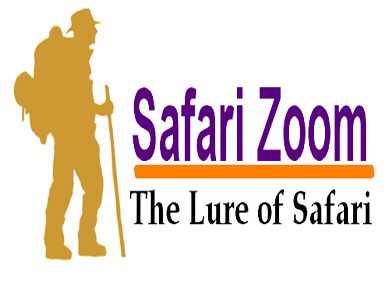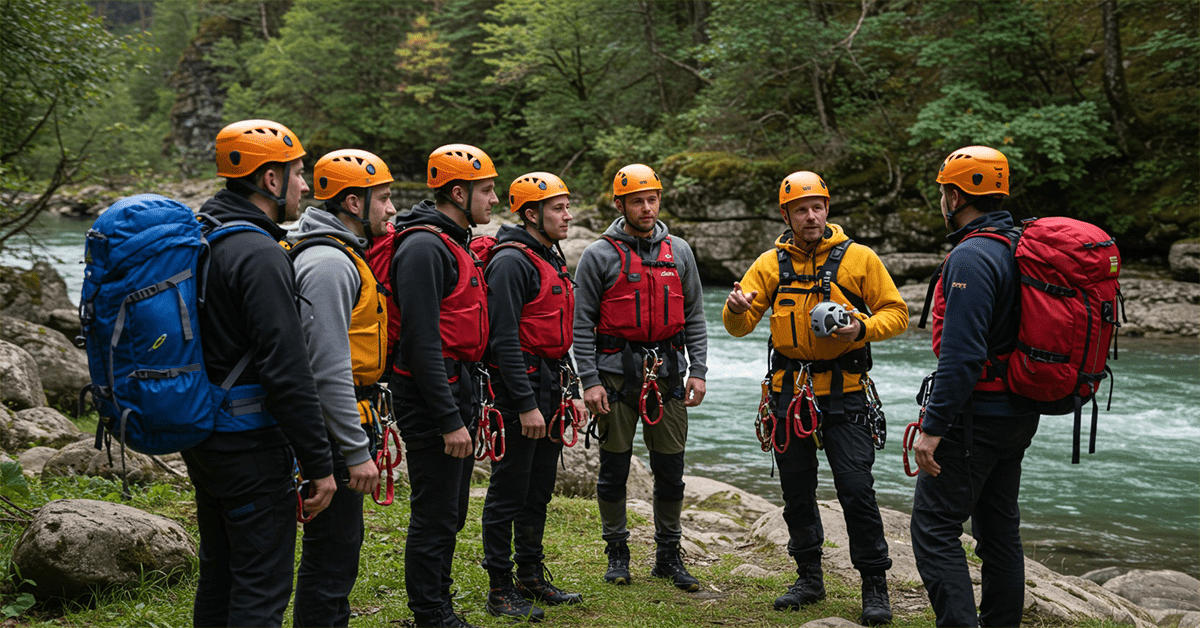7 Steps to Ensure Safety in Tours and Activities
Tourism is one of the most exciting industries in the world, giving people opportunities to explore new places, cultures, and adventures. But while the thrill of discovering something new is irresistible, safety is something that can never be compromised. Whether it’s hiking through a rainforest, kayaking on open waters, or simply exploring a bustling city, accidents can happen when safety precautions are overlooked. This is why tour operators, guides, and even travelers themselves must treat safety as the top priority.
When a tour or activity is well-organized with proper safety measures in place, travelers feel more confident and relaxed. This not only improves their experience but also builds trust in the service provider. In today’s highly competitive tourism industry, a reputation for safety can become a company’s strongest marketing tool. People are far more likely to recommend and return to an operator that demonstrates care and responsibility for its guests.
In this article, we’ll break down seven essential steps to ensure safety in tours and activities. These steps aren’t just about following rules—they are about creating a culture of safety, being prepared for the unexpected, and ensuring that every traveler returns home with great memories instead of unfortunate stories.
Step 1 – Conduct Thorough Risk Assessments
Before launching any tour or activity, the first and most critical step is to conduct a detailed risk assessment. A risk assessment allows operators to identify potential hazards, evaluate their likelihood, and put preventive measures in place. Without this step, even the best-looking tour can turn into a liability.
Identifying Potential Hazards
Every activity comes with risks. For example, a mountain trek has dangers like slippery trails, wild animals, or sudden weather changes. A snorkeling trip may face risks such as strong currents, jellyfish stings, or faulty equipment. Even something as simple as a city walking tour may involve risks like traffic accidents or pickpocketing. By identifying these hazards beforehand, operators can create solutions that protect both staff and tourists.
Evaluating Environmental, Physical, and Cultural Risks
Risks don’t just come from nature; they can also be social or cultural. In some areas, travelers may unintentionally offend local traditions or enter unsafe neighborhoods. Physical risks may include fatigue, dehydration, or pre-existing health conditions of participants. By looking at risks from multiple angles—environmental, physical, and cultural—operators can be better prepared.
Creating a Preventive Action Plan
A risk assessment is incomplete without an action plan. For instance, if the risk is dehydration during a desert tour, the solution might be to provide water bottles, shaded rest stops, and advice on proper clothing. If there’s a risk of wildlife encounters, guides/rangers should carry a deterrents/gun and be trained in non-confrontational methods. Writing down these preventive measures and sharing them with staff ensures that everyone knows what to do before, during, and after an emergency.
Ultimately, conducting thorough risk assessments not only prevents accidents but also strengthens the reliability of the entire tourism operation.
Step 2 – Provide Comprehensive Safety Training
Even the most detailed safety plan will fail if the people running the tour are not properly trained. Tour guides, drivers, instructors, and other staff play a direct role in ensuring traveler safety. Their training can make the difference between a smooth experience and a disastrous one.
Training Staff and Tour Guides
Staff should undergo regular training sessions that cover first aid, CPR, emergency evacuation procedures, and the specific risks of their activity. For example, a scuba diving instructor should be well-versed in decompression sickness protocols, while a hiking guide should know how to handle altitude sickness. Beyond technical training, staff must also learn how to remain calm and reassuring under pressure, since panicking can make any situation worse.
Educating Tourists on Safety Protocols
Many accidents occur simply because travelers were not properly briefed before an activity. Safety training shouldn’t just be for staff—it should extend to tourists as well. Before starting a tour, operators should hold short orientation sessions explaining key safety measures. This could include things like how to wear life jackets, when to stay with the group, or what to do if separated. A well-informed traveler is a safer traveler.
Using Role-Play and Simulations for Real-Life Scenarios
One of the most effective training methods is simulation. By role-playing emergency situations, staff and travelers can practice how to react in real time. For example, practicing an evacuation drill on a boat tour ensures that everyone knows the nearest exit and how to use life-saving equipment. These role-play exercises build confidence and prepare participants for the unexpected.
Comprehensive training is not just a legal requirement in many countries—it’s also a moral obligation. After all, every traveler is putting their trust in the operator, and that trust should never be taken lightly.
Step 3 – Maintain Proper Equipment and Facilities
Safety does not stop at training—it extends to the tools and facilities used during the tour. Outdated or poorly maintained equipment is one of the leading causes of accidents in tourism activities.
Regular Equipment Inspections
Every piece of equipment, from helmets and harnesses to boats and vehicles, must be inspected regularly. Operators should keep maintenance logs and have checklists to ensure nothing is overlooked. Even small issues, like a slightly frayed rope or loose seatbelt, can turn into major hazards if ignored.
Safety Certifications and Compliance
Different activities require different certifications. For example, scuba diving gear must meet international diving safety standards, while vehicles used for tours must comply with road safety regulations. Regular audits by certified professionals help ensure compliance with local and international safety laws.
Emergency Kits and Backup Systems
Every tour should be equipped with first-aid kits, fire extinguishers, communication devices, and other emergency tools. In adventure activities, carrying backups—like extra ropes, batteries, or oxygen tanks—can save lives. Guides should also know how to use all emergency equipment correctly and quickly.
Maintaining proper equipment is not just about ticking a box for regulations—it is about showing genuine care for the safety of participants. Travelers notice when an operator invests in quality gear, and it immediately builds confidence in the entire experience.
Step 4 – Establish Clear Communication Channels
Communication is the lifeline of safety. No matter how prepared you are, emergencies can still happen, and in such moments, quick and clear communication can save lives.
Pre-Tour Safety Briefings
Before starting any activity, operators should hold safety briefings. These briefings must explain potential risks, rules to follow, and emergency steps. For example, in a rafting tour, guides should explain paddling commands, what to do if someone falls out, and how to stay calm in rapids. A few minutes of briefing can prevent hours of chaos later.
Multi-Language Safety Instructions
Tourism attracts people from all over the world, which means language barriers are common. To overcome this, operators should provide safety instructions in multiple languages, or at least use clear visuals and demonstrations. Even a traveler who doesn’t understand the local language should still know how to stay safe.
Emergency Contact Systems
During tours, operators must have systems in place to stay connected with both travelers and emergency services. This may include radios, satellite phones, GPS trackers, or even mobile apps designed for tourism safety. Ensuring that travelers have access to emergency contacts gives them peace of mind and strengthens the operator’s professionalism.
Clear communication transforms a group of strangers into a team, ready to face challenges together. In many cases, it’s the difference between panic and preparedness.
Step 5 – Develop Emergency Response Plans
No matter how much you plan, accidents and unexpected situations can still occur. That’s why it’s essential for every tour operator to have a structured emergency response plan. A good plan not only minimizes damage but also saves lives.
First-Aid Readiness
Every tour should have at least one staff member trained in advanced first aid and CPR. Basic medical supplies such as bandages, antiseptics, painkillers, and splints should be readily available. In more adventurous tours, like climbing or diving, carrying specialized equipment such as oxygen tanks or stretchers is critical.
Evacuation Procedures
In case of serious danger, clear evacuation procedures must be in place. For example, in a wildlife safari, vehicles should know designated escape routes. In water activities, guides should have quick access to life rafts or safety boats. Practicing these evacuation steps in advance ensures quick action during real emergencies.
Coordination with Local Emergency Services
Tour operators should build relationships with local hospitals, rescue teams, and law enforcement. Having a direct contact list and communication line speeds up the response in critical situations. For example, in mountain trekking, guides should know the nearest helicopter rescue service, while in city tours, knowing the local police hotline is vital.
An emergency response plan is like a fire extinguisher—you hope you’ll never need it, but when the time comes, it can be the most valuable tool you have.
Step 6 – Ensure Legal and Insurance Compliance
While safety training, equipment, and emergency planning are vital, legal compliance and insurance coverage form the backbone of responsible tourism. Ignoring this step can not only put travelers at risk but also jeopardize the future of the tour company itself.
Understanding Liability Laws
Every country has its own set of liability laws when it comes to tourism and adventure activities. Some regions hold tour operators strictly liable for any accidents, while others may require tourists to sign waivers. Operators must understand these laws thoroughly to avoid legal complications. For instance, a hiking company in the U.S. may face lawsuits if it fails to provide proper safety gear, while in some countries, the responsibility might partially shift to the traveler. Knowing these details helps businesses protect themselves while safeguarding guests.
Tour Operator Insurance Requirements
Tour companies should carry comprehensive insurance that covers accidents, medical emergencies, property damage, and third-party liability. Insurance not only protects the operator but also reassures travelers that they are in safe hands. For example, a diving school with proper liability insurance signals professionalism and responsibility. In addition, some countries mandate that operators show proof of insurance before being licensed to operate.
Traveler Insurance Recommendations
While operator insurance is crucial, travelers themselves should be encouraged to purchase personal travel insurance. This is especially important for activities with higher risks, such as skiing, rafting, or rock climbing. Operators can partner with insurance companies to offer tailored packages to travelers, ensuring they are covered in case of accidents, trip cancellations, or medical emergencies abroad.
Legal and insurance compliance may not sound exciting, but they play a critical role in ensuring that safety is not just a promise, but a legally enforceable guarantee.
Step 7 – Promote a Safety-First Culture
Safety isn’t just about rules, gear, or training—it’s a mindset. For a tourism company to thrive, safety must be ingrained in its culture, from top management to frontline staff.
Encouraging Feedback from Travelers
Travelers often notice risks that staff may overlook. By encouraging feedback—through surveys, suggestion boxes, or post-tour reviews—operators can discover blind spots and continuously improve safety protocols. For example, if multiple tourists mention slippery steps on a boat, it’s a clear sign that changes need to be made.
Rewarding Safety-Conscious Practices
Staff who demonstrate excellent safety practices should be recognized and rewarded. Whether it’s a guide who calmly handled a medical emergency or a driver who spotted a hazard before it became dangerous, positive reinforcement builds a strong safety culture. This creates motivation and sets an example for the entire team.
Updating Protocols Regularly
Safety guidelines should never remain static. As new risks emerge and technology advances, protocols must be updated accordingly. Regular updates show both staff and travelers that safety is always evolving, not just a one-time effort.
A strong safety-first culture creates trust, reduces risks, and builds a lasting reputation in the tourism industry.
Benefits of Ensuring Safety in Tours and Activities
Prioritizing safety brings several long-term advantages beyond just avoiding accidents.
In fact, many travelers today actively research safety records before booking a tour. Companies that prioritize safety not only protect lives but also secure a stronger position in the market.
Common Mistakes to Avoid in Safety Management
Even with good intentions, many operators make mistakes that can undermine safety efforts.
Avoiding these mistakes ensures smoother operations and stronger traveler satisfaction.
Safety Standards Around the World
Safety standards vary widely depending on the region. For example:
Technology in Enhancing Safety
Modern technology has transformed the way safety is managed in tourism.
Technology not only reduces risks but also gives travelers a sense of reassurance that they are protected by more than just human effort.
Conclusion
Safety is the invisible thread that holds every great tour together. Without it, even the most breathtaking experience can quickly turn into a nightmare. By following these seven steps—risk assessments, training, equipment maintenance, communication, emergency planning, legal compliance, and fostering a safety-first culture tour operators can create unforgettable adventures while keeping travelers secure.
In the end, safety isn’t just a requirement; it’s a promise. A promise that every traveler will return home safely, carrying only memories, stories, and smiles.


